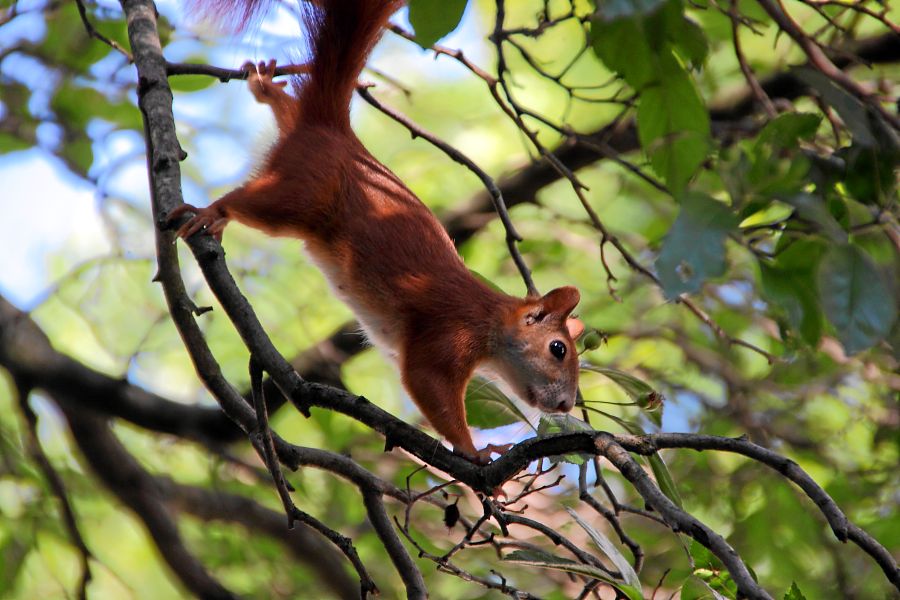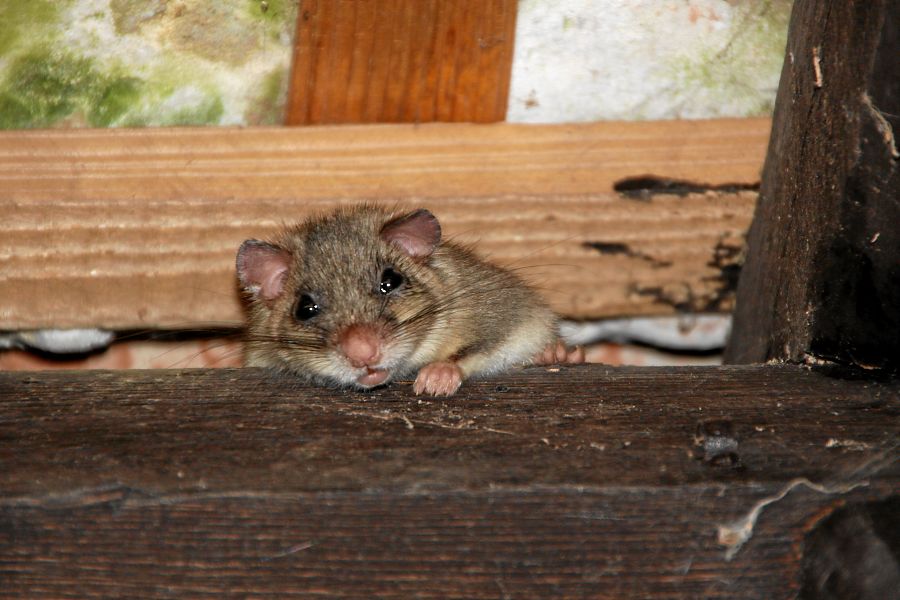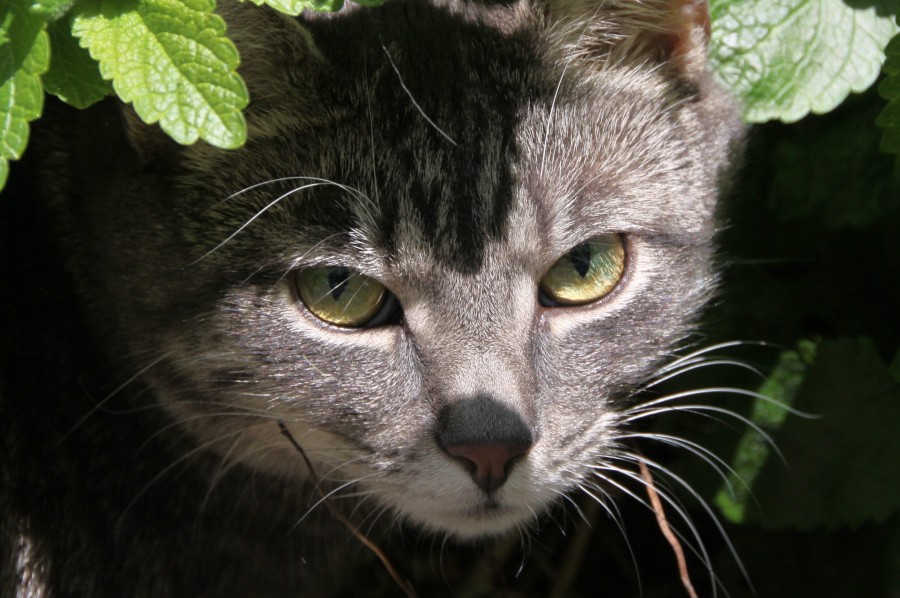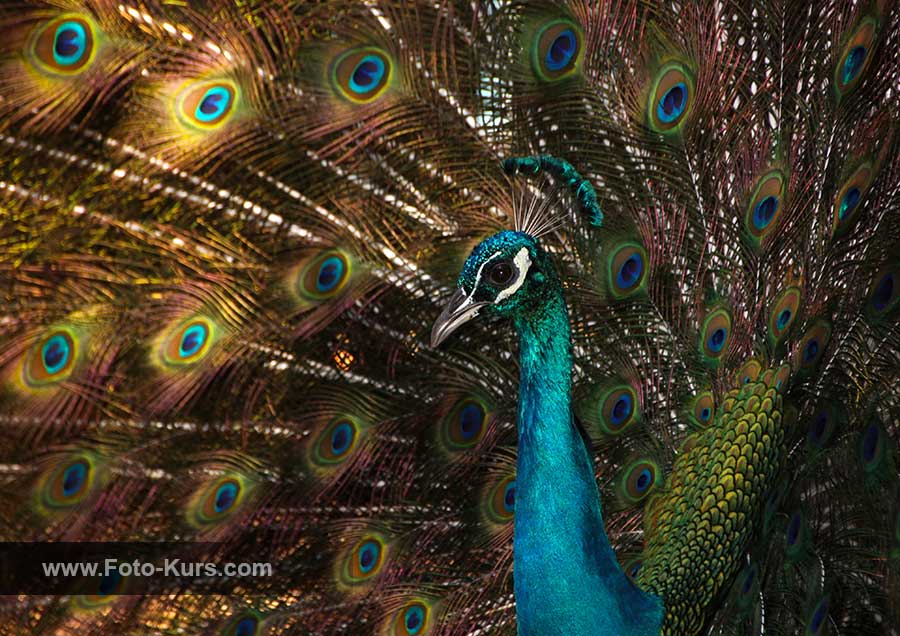Animal photography - how to take good animal photos
Animal photography prefers taking photos of living animal in their natural environment. Telephoto lenses are often necessary because of the natural shyness of animals. Or because of their dangerous nature - a photographer does not want to end up as animal fodder.
Good photos of animals often offer astonishing insights, especially those who show the perspective of an animal.
Squirrels (Sciurus vulgaris)
Female squirrel with its summer coat without tufts (these reappear when the cold season starts).

Female squirrel (photo: A. Pratzner)
- Camera:
- Canon EOS 50D
- Aperture:
- f/6.3
- Exposure:
- 1/250 Sek.
- Focal length:
- 178 mm
- ISO:
- 500
Press the trigger more often when you want to take pictures of squirrels, because these animals are very fast and in general not tame!
Perspective Changes
Perspective change is the single biggest trick when photographing animals and kids. Go to their eye level height and photograph from there. Best bring a knee pads, to protec your knees. That will bring spectacular insights as you suddenly see the animal into the eyes and see what the animal sees. For example when you lower your perspective to the height of a rabbit the kid feeding it with a carrot suddenly seems like a big generous giant for the rabbit. And there you have it: a changed totally different perspective.
Dormouse (Glis glis)

Curious dormouse (photo: A. Pratzner)
- Camera:
- Canon EOS 50D
- Aperture:
- f/5.3
- Exposure:
- 1/60 Sek.
- Focal length:
- 250 mm
- ISO:
- 400
The name of the dormouse is in German aligned to its 7 months of hibernation and would be directly translated "7-months sleeper". It is a nocturnal animal, that is why you need luck to photograph him during the day. At night it is a very noisy animal, which is sometimes confused with burglars - surprisingly, as it is very small and lightweight.
Cat (Felidae)

Cat among a mint (photo: A. Pratzner)
- Camera:
- Canon EOS 50D
- Aperture:
- f/7.1
- Exposure:
- 1/250 Sek.
- Focal length:
- 80 mm
- ISO:
- 100
The Neighbors’ cats can be very trusting. This one is it definitely not and only the mice among the mint could keep the cat among the mint. Especially interesting when doing animal photography is direct eye contact.
Flares in the eye - very important for animal photography

Flares in the eye are very important (photo: A. Pratzner)
- Camera:
- Canon EOS 50D
- Aperture:
- f/6.3
- Exposure:
- 1/250 Sek.
- Focal length:
- 200 mm
- ISO:
- 400
Especially, we should care about flares/ light reflections in the eyes of animals. If there are no flares in the eyes on the photo, then the photo (and the animal) often seems lifeless. That is why it is absolutely important, that a flare can be seen in one of the eyes.
Mostly a little head rotation of the animal is enough (what the animal in general doesn't do on by acclamation. Some animals follow slow hand motions with the eyes - what isn't that easy, when you keep a camera steady with one hand while the other one does a motion. But practice makes perfect. It works in the beginning till the animal realizes that the motion isn't dangerous nor will feed it. Just have a go.
Additional Tipp: Take a lot of photos - it helps when you set your camera insofar, that it does several photos when you push the trigger. That way you have a lot of photos later on from which you can choose the optimal one.